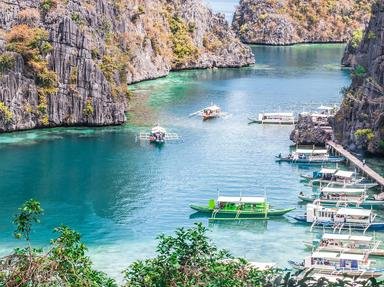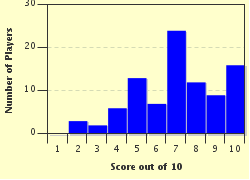Quiz Answer Key and Fun Facts
1. The modern name for the country can trace its roots to the explorer Ruy López de Villalobos. Who was he honouring when naming the country in 1543?
2. Following which directions would lead you to the Philippines?
3. The Philippines is part of the Pacific Ring of Fire. Which of the following features are typical of this belt?
4. The Rice Terraces of the mountainous Cordilleras are the only form of stone construction in the Philippines uninfluenced by colonial cultures. What crop was grown before rice took over around 1600 AD?
5. Which term most accurately describes the native forests?
6. Ninety kilometres north-west of the capital Manila can be found Lake Pinatubo, possibly the country's deepest lake at 600 metres depth. How was it formed?
7. Turning to energy, which renewable resource contributes the most to the Philippine power network?
8. The Chocolate Hills of Bohol are a collection of more than 1,250 cone-shaped limestone hills spread over some 50 square kilometres. Why 'chocolate'?
9. Lending its name to a 'Star Trek' character, in which Philippine sea can you find Tubbataha Reefs National Park?
10. Going underground now, this Philippine tourist attraction on the island of Palawan was until 2007 considered the longest underground river in the world. Featuring stalactites, stalagmites and large chambers up to 2.5 million cubic metres in size, what type of rock does the river pass through?
Source: Author
suomy
This quiz was reviewed by FunTrivia editor
Tizzabelle before going online.
Any errors found in FunTrivia content are routinely corrected through our feedback system.

